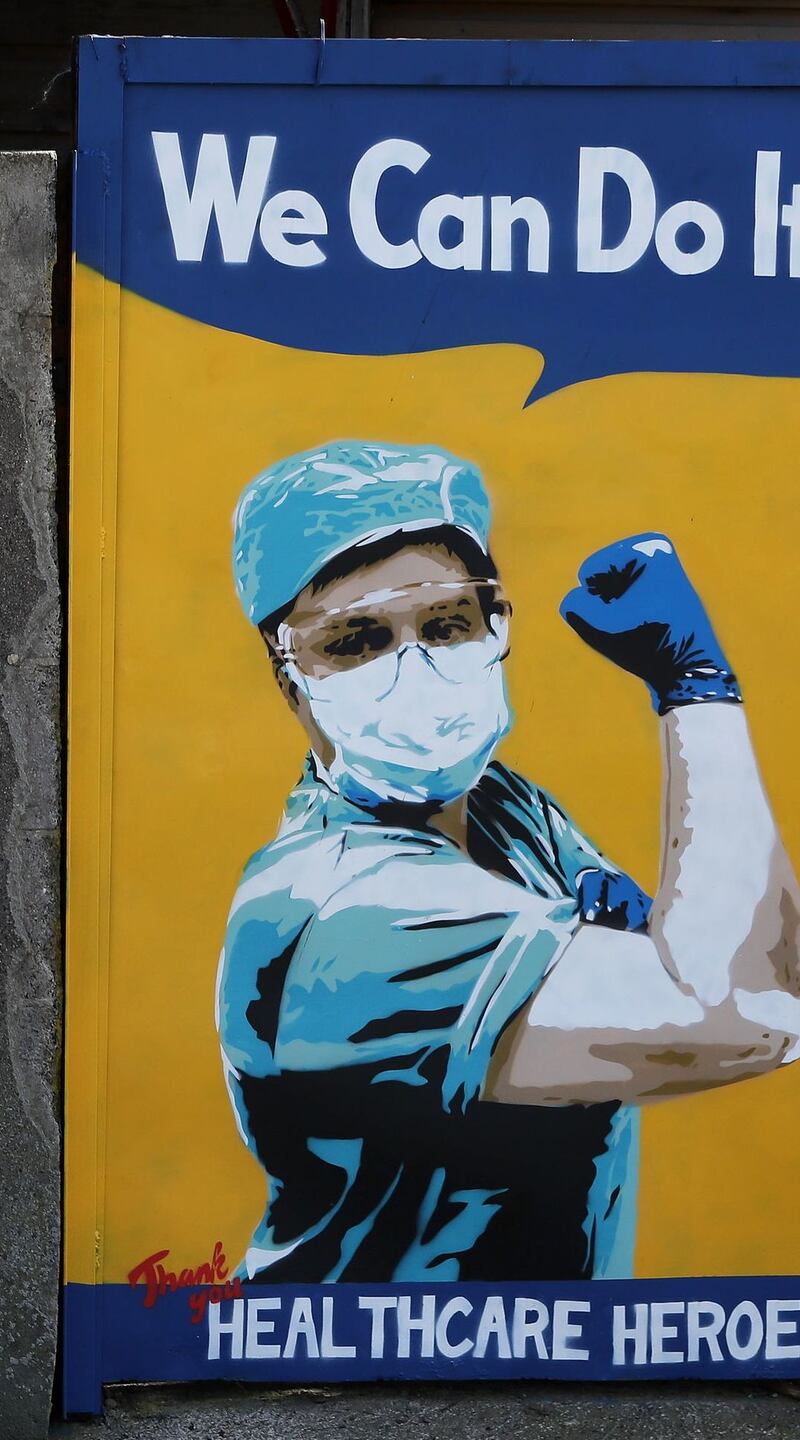It has been called “the hammer and the dance”. This is the ebb-and-flow approach countries must follow to reopen their societies after enforced lockdowns to stem coronavirus outbreaks.
The term was coined by Silicon Valley entrepreneur Tomas Pueyo in a widely shared blogpost to explain how to lift social distancing restrictions while monitoring any resurgence in Covid-19 disease that has killed close to 200,000 people globally and more than 1,000 on the island of Ireland.
The “hammer” is the lockdown – strictly enforcing physical distancing rules to stop outbreaks – while the “dance” is the combination of comprehensive and rapid testing, isolating infected people and tracing their contacts to manage the virus while easing restrictions.
Ireland sits precariously between the two. The Government is seeing the benefits of the hammer, with infection rates, hospital admissions and deaths declining.
It is now choreographing the dance to pave the way for some restrictions to be eased when they expire in 10 days, on May 5th, the end of the May Bank Holiday weekend, though officials have warned that they could be extended because of “slippage” in compliance.
Sources say that whenever the relaxations come, they will not happen all at once, that they will be in phases or waves over several months, or longer. Some restrictions are likely to be in place until a vaccine or effective anti-viral treatments are found or research shows the population has reached a level of mass immunity. None of those milestones is likely to be reached soon.
The State's chief medical officer Dr Tony Holohan warned this week that he was "very concerned" about public complacency setting in and warned that it was still not safe to lift any restrictions, saying people should not automatically assume anything will change on May 5th.
Intense, complex discussions are ongoing behind closed doors in Government departments between politicians, public health officials and civil servants, in consultation with advisers, and industry representatives outside, about how far, how quickly and how best to reopen.
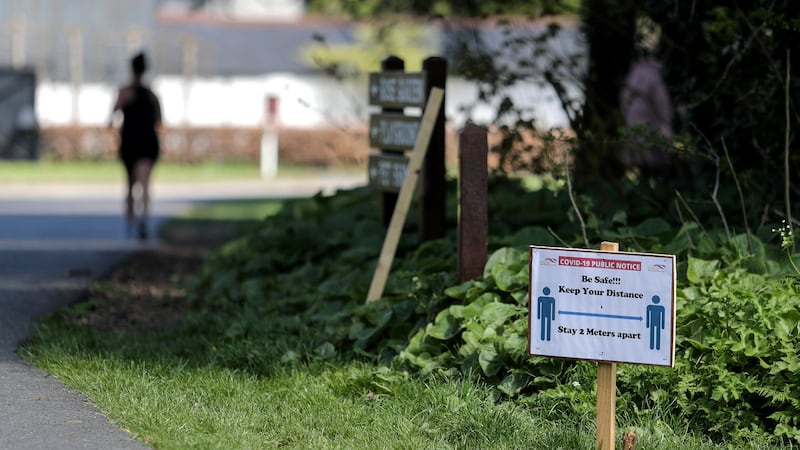
Taoiseach Leo Varadkar says a plan will be shared with the public before May 5th.
If there is a loosening of restrictions by then – and they are likely to be small, limited steps – they will be followed by a “wait and see” period of at least 14 days and up to 28 days, the equivalent two 14-day incubation periods of the disease, to see if the changes lead to an increase in infections.
The reopening will not follow the same switch-flicking introduction that locked down the country in two phases in March when cases of coronavirus were increasing at an alarming rate.
Public health officials, while complimenting the level of compliance with the restrictions, recognise the toll that they are having on people, particularly the over 70s and medically vulnerable “cocooning” at home.
"We are conscious of how difficult this has been for people," says Cillian De Gascun, chair of the Covid-19 expert advisory group at the Department of Health's National Public Health Emergency Team. "We are conscious of the cure not being worse than the disease. We do want, if it is safe to do so, to be able to lift restrictions in a measured, phased way. It is a very delicate process."
Among the main measures being considered on public distancing is whether the two-kilometre limit from homes could be increased to five or 10 kilometres in the first phase of restrictions being lifted. This could allow people to spend more time outside as long as they follow the physical distancing restrictions of keeping two metres away from other people.
There are also discussions around whether older people, currently cocooning, could be permitted to go outside for a walk for a couple of hours a day as long as they avoid all other human contact and touching things. They could perhaps be asked to wear a mask during that time.
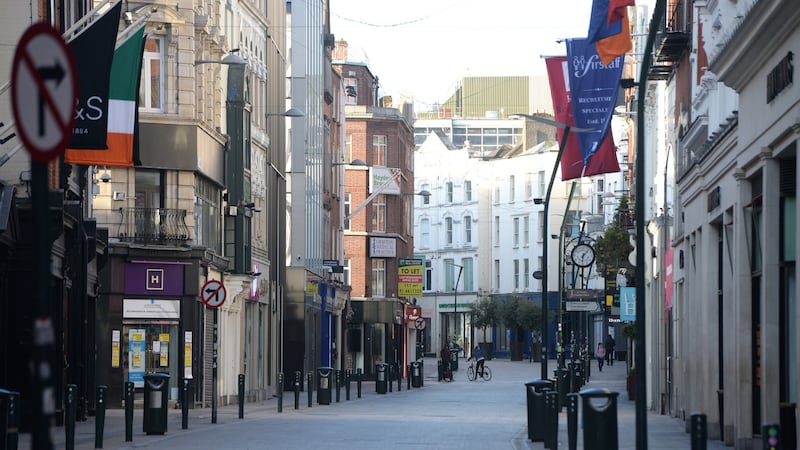
Older people and others in vulnerable groups could be permitted to use supermarkets on restricted hours to protect them from others, similar to the hours some supermarkets operated before cocooning was introduced at the end of March. This could help ease the emotional and psychological effect of social isolation that some older people are feeling now.
Public health officials are also looking at the possibility of allowing family members to meet other relatives so that contacts are not limited to immediate households.
“Could we expand that to the family network? Your family might be able to interact with your siblings’ family and maybe your parents. Maybe the network gets a little bit larger but it is still controlled and it is not bringing in ‘randomers’ or strangers,” said Dr De Gascun.
“From a mental-health perspective, that would be useful for grandparents if they could see their families, their children and grandchildren. They could come in and have dinner or a hug.”
This would follow what New Zealand, which has one of the lowest per capita number of Covid-19 cases in the world, is planning to do when it starts lifting its lockdown on Monday.
The country has scaled up testing to one of the highest testing rates in the world relative to its population, allowing more businesses to open and to expand family “bubbles” to include close family members or those who might be alone or isolated in the community.
“It is making life a little bit more bearable and a little bit more normal,” says Dr De Gascun.
Pete Lunn, head of behavioural research at the Economic and Social Research Institute (ESRI) and a member of one of the subgroups advising the NPHET officials, recommends this cautious approach.
If the Government moves “too far too quickly” it would cause social tension because people are “extremely nervous about being asked to return to work and don’t feel comfortable”. It could also create a much bigger problem of having “some kind of second surge” or rise in infections, he says.
Getting “the big call wrong” could lead to a loss of public confidence, he warns.
“It could be very difficult to get the genie back into the bottle and to then go back to a world where we are all following their advice and complying as well as we have been,” he says.
"I don't like the phrase 'return to normal'," says infectious disease specialist Sam McConkey, professor at the Royal College of Surgeons in Ireland.
Dr McConkey says that talk of a vaccine becoming available in 12 to 18 months is a “best-case scenario”. The last 10 licensed vaccines brought to market for human diseases took about seven years to develop and make, he says.
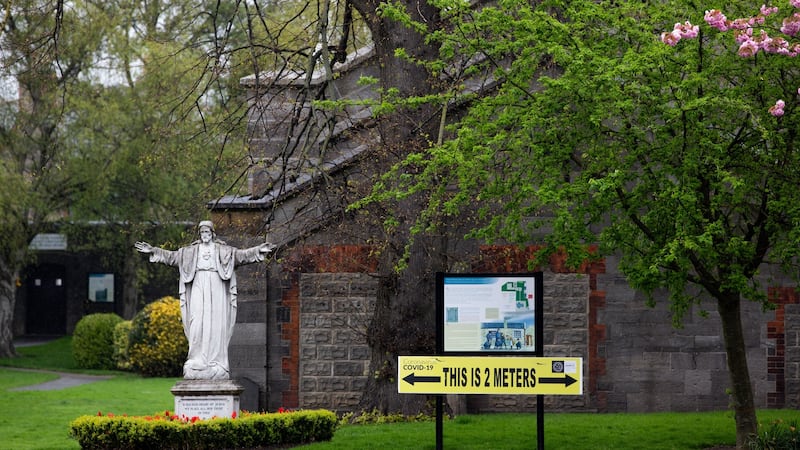
The Government and public officials are following documents from the World Health Organisation (WHO) and the European Centre for Disease Prevention and Control on how to exit lockdowns safely.
To successfully leave lockdown, the WHO has published a six-step plan. The recommendations include ensuring a government has the capacity in place to carry out adequate testing, contact tracing and surveillance to detect rapidly if any relaxation steps fail.
Dr De Gascun says that the case definition or testing criteria will be broadened to test more people and carry out more active contact tracing to get a “more real-time picture of what is happening in the community”.
One of the most challenging recommendations for Ireland is that governments be able to mitigate the risk of importing Covid-19 cases from outside their borders, which will be difficult given the open border with Northern Ireland and ease of travel with the rest of the UK.
Dr Gabriel Scally, the Northern Ireland public health specialist who authored a report on the CervicalCheck controversy, says that it would be "extremely problematic" if the North and South were "in different gears" on lifting restrictions particularly given the UK's poor record on testing.
He notes the high proportion of cases per capita in Cavan, a border county with the second highest incidence of cases in the country as a percentage of its population.
The flattening of the infection curve and the reduction of the reproductive rate within the community – the rate at which others are being infected in the community – to 0.5 (meaning one person is not infecting others) gives the Government "more wriggle room" to get things wrong on lifting restrictions, says Paddy Mallon, infectious diseases specialist at St Vincent's in Dublin and professor of microbial diseases at UCD.
This and the Irish public’s strong compliance with social distancing were “slotting into place beautifully” for restrictions to be lifted, he says, but the “final piece of the jigsaw” is getting the testing right.
Mallon believes that “everything is on the table” on what restrictions can be eased and some mistakes can be made in relaxing restrictions so long as public health officials do not lose control of the epidemic and can control “real-time monitoring” of the reinfection rate in the relaxation phase.
Based on interviews with public health officials, the following are among the things being considered.
Education
As flagged last weekend by the Minister for Health Simon Harris, the return of primary schools is being considered, starting with classes reopening for up to one day a week. This could be increased over time if social distancing can be maintained and new Covid-19 cases do not increase.
Priority could be given in secondary schools to allow Leaving Cert students only to return ahead of the start of the exams on July 29th, with maybe 10 in a class at any one time.
All eyes are on how similar relaxations fare in Denmark, the second country after Italy to announce a lockdown but the first in Europe to reopen primary schools last week.
In Denmark, desks must be at least two metres apart and no more than 10 children are permitted in each classroom. Children can play only with a limited numbers at break times, hands must be washed regularly, and pick-up and drop-offs by parents must take place at intervals.
Economy
Minister for Finance Paschal Donohoe has indicated that he will be "tapering and changing" the Covid-19 pandemic welfare subsidies that are supporting 740,000 people and costing €300 million a week when the 12-week introduction period expires in mid-June.
Part-time and casual workers, the vast majority of whom are young, are expected to be in line to lose out from reduced payments as the current scheme is considered unsustainable beyond the 12-week period, if lockdown measures are not lifted to allow people to return to work.
“I don’t think it is sustainable to have the kinds of forced unemployment we have now for a sustained period of time,” says Dermot O’Leary, chief economist at Goodbody Stockbrokers.
“The focus will move to how do we return to work and live with the virus if some of the views about how long the virus is going to be around are correct.”
Business
As a first step, the Government is considering allowing the reopening of non-essential businesses that can easily implement physical distancing. These could include garden centres, hardware stores and some shops and retail outlets with restricted capacity and limited access.
Remote working would continue to be encouraged to maintain social distancing among employees. A risk-based approach would be applied to companies and offices on whether they could facilitate social distancing in order to reopen.
There is likely to be guidance around square footage of workplaces and the maximum capacity of work spaces, and the Health and Safety Authority could play a role in assessing the suitability of workplaces, along with the safety of employees in work settings.
Germany started reopening for business last Monday. Shops with a floorspace of up to 800 square metres – about the size of four tennis courts – along with car and bicycle dealerships and bookstores, were allowed to open provided they apply strict social distancing and hygiene rules.
In the western state of North Rhine Westphalia, larger furniture outlets, including 11 stores of Swedish chain Ikea, were allowed to reopen.
Danny McCoy, chief executive of the business representative group Ibec, says that the term “essential” might not be appropriate when it comes to reopening Ireland, given the economic and employment crisis caused by the Covid-19 pandemic.
“The reopening is trying to deal with the other curve problem, which is the unemployment curve,” he said.
“One criteria [for reopening] would be that labour-intensive industries would become more essential to get more people back to work to deal with the economic problem.”
Protecting workers might involve companies looking at “rationing time” by using more of the 21 eight-hour periods in the working week and not just the five regular daytime periods, to facilitate social distancing in workplaces.
“The idea of getting mass groups back to work, while it might seem counter-intuitive from a public health dimension, is very important for the economic problem we have,” he says.
Construction
Construction resumed on 35 social housing projects on Monday to deliver local authority accommodation for people in emergency accommodation or at risk of homelessness.
Public health officials consider the return of construction activity as being low-risk given that builders typically work outdoors and can maintain social distancing.
The construction industry has introduced detailed safety guidelines including regulations on lone travel to and from work, extra sanitation and the issuing of personal protective equipment and time limits of less than 15 minutes for those who have to work with others within two metres.
"We have prepared ourselves very well for whenever we get the get-go," says Tom Parlon, director general of the Construction Industry Federation.
“There is no evidence that construction so far has been a high-risk activity. There are no clusters on sites, and an awful lot of the projects closed down are quite essential. Obviously it is a big employer and there is a limit to how long we can continue to pay €1 billion a week to keep everybody idle.”
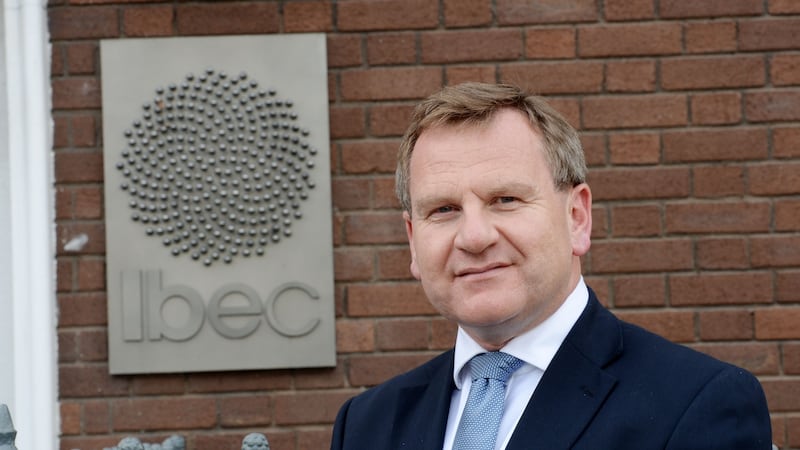
Danny McCoy of Ibec says maintaining a competitive advantage to avoid the loss of orders or customers will force some companies to reopen in even a limited way if there is an “uncoordinated approach” between countries on lifting lockdowns.
This was particularly the case in construction, he says, given that Ireland was one of the few places to prohibit building.
“If you think about sectors like biopharma and medtech, they will be behind the curve the longer this is out,” he says.
Sport and recreation
The return of contact sports such as GAA football and hurling, soccer and rugby along with mass sports gatherings have been ruled out in the first wave of relaxations, but other sports could return.
“We will be looking at outdoors sports first where you can physical distance, so things like golf is a classic example. Even something like tennis where you are on opposite sides of the net should be fine,” says Dr De Gascun.
“So the sports will be outdoor, small group or individual activities first. We will monitor the effect of that and keep track of the cases and build up to team-based sports that would be outdoors, and some clubs would be able to manage.”
Cinemas, theatres and music venues are unlikely to open soon because of concerns around compliance. Some might be able to impose physical distancing through allocated seating, though it is likely to be difficult to manage and would not be financially viable in many cases.
Restaurants and cafes
Public health officials will assess whether these businesses can reopen in a safe, physically distanced way, including for staff working in kitchens.
The Restaurant Association of Ireland (RAI) has proposed reopening by following WHO guidelines to limit tables to four diners on a floor space of 10 square metres but they would need State financial support because, in many cases, opening with limited space will not be economically viable.
"Whether it is profitable for a business to reopen is dependent on whether the Government has support measures ," said Adrian Cummins, chief executive of the RAI.
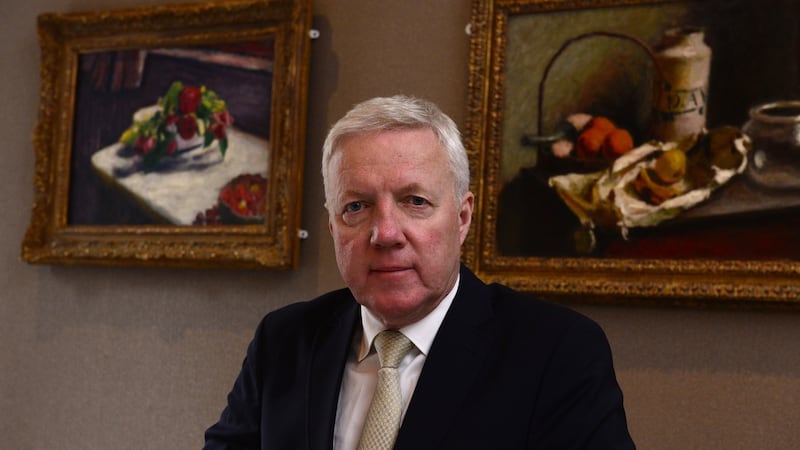
Restaurateur Patrick Guilbaud, who has a two-star Michelin restaurant in Dublin, says it is "ridiculous" to think the industry could reopen with heavy restrictions in place.
“You can’t do half-measures in the restaurant business. The last thing we want to do is open as an industry and to close six weeks later because we spread the disease. That will be even worse for us. We want to be part of a solution, not part of the problem,” he says.
Holidays
Low-cost airline flights are likely to be a thing of the past for some time given how Ryanair boss Michael O'Leary has ruled out removing middle seats in airplane rows.
While foreign holidays will likely be ruled out for some time, domestic holidays could be permitted in later waves of restrictions when the limits on travel could be loosened further to allow people to travel to holiday homes or to campsites around the country.
“At the moment, it is two kilometres. It won’t go to 200 but it might go to five or 10, and if we don’t see a significant increase in cases or any negative impact of those measures, then absolutely maybe by the middle of the summer, it could be a couple of hundred kilometres,” says Dr De Gascun.
Although it has been dismissed by some in political circles, public health officials have discussed easing restrictions in particular regions, keeping people in their counties or provinces, given that the epicentres of the coronavirus outbreaks in Ireland have been in Dublin and Cork.
"Staycations are a very good option. You could have camping on the Wild Atlantic Way or on a beach. It is a realistic hope that you could be out in the cottage in Donegal with people you already live with. Unfortunately, I am not optimistic about the flight to Greece, " said Dr Sam McConkey.
What the specialists say
All these measures must be carefully weighed given the risks involved, the specialists say.
Dr Paddy Mallon warns that State officials must not lose control of the epidemic while relaxing the restrictions, as it could undo weeks of progress made to suppress the outbreak. He warns that the outbreaks in nursing homes show how “frightening” this virus can be.
“I would be incredibly fearful that if we don’t get this right, the consequences could be dire,” he says.
Dr Cillian De Gascun, who is also director of UCD’s National Virus Reference Laboratory, points to the experience of Italy – where case numbers and deaths soared as hospitals became overrun with patients sick with Covid-19 – to illustrate the risks of losing control of the epidemic.
“That is why we have to be so careful. If we still have a large susceptible population, it will take off very, very quickly,” he says.
“People have done so well to get to where we are. It would be an awful shame to lose that now.”
